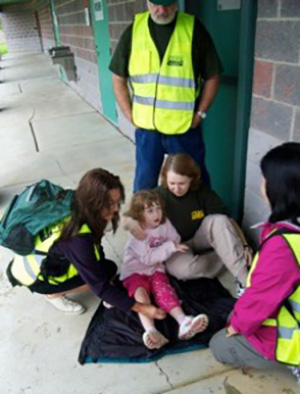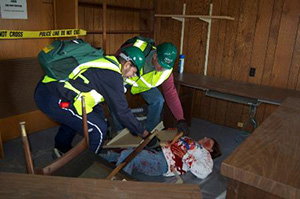Tri-Community CERT Mission
Mission Statement
To provide assistance to the Public Safety Departments in our communities and be prepared to deploy to other communities when needed. We will work together as community-based volunteer teams that will train, inform and educate our volunteers on disaster preparedness. We will be ready to support our emergency personnel in doing the "greatest good for the greatest number of people" while upholding the CERT protocol.
Introduction
Following a major disaster, first responders who provide fire and medical services will not be able to meet the demand for these services. Factors as number of victims, communication failures, and road blockages will prevent people from accessing emergency services they have come to expect at a moment's notice through 911. People will have to rely on each other for help in order to meet their immediate lifesaving and life sustaining needs.
If we can predict that emergency services will not meet immediate needs following a major disaster, especially if there is no warning as in an earthquake, and people will spontaneously volunteer, what can government do to prepare citizens for this eventuality?
- Present citizens the facts about what to expect following a major disaster in terms of immediate services.
- Give the message about their responsibility for mitigation and preparedness.
- Train them in needed lifesaving skills with emphasis on decision making skills, rescuer safety, and doing the greatest good for the greatest number.
- Organize teams so that they are an extension of first responder services offering immediate help to victims until professional services arrive.
Background
The Community Emergency Response Team concept was developed and implemented by the Los Angeles City Fire Department (LAFD) in 1985.
The Federal Emergency Management Agency (FEMA) recognizes the importance of preparing citizens. The Emergency Management Institute (EMI) and the National Fire Academy adopted and expanded the CERT materials believing them applicable to all hazards.
If a community wants to supplement its response capability after a disaster, civilians can be recruited and trained as neighborhood, business, and government teams that, in essence, will be auxiliary responders. These groups can provide immediate assistance to victims in their area, organize spontaneous volunteers who have not had the training, and collect with prioritization and allocation of resources following a disaster.



 An official website of the Cuyahoga County government. Here’s how you know
An official website of the Cuyahoga County government. Here’s how you know

